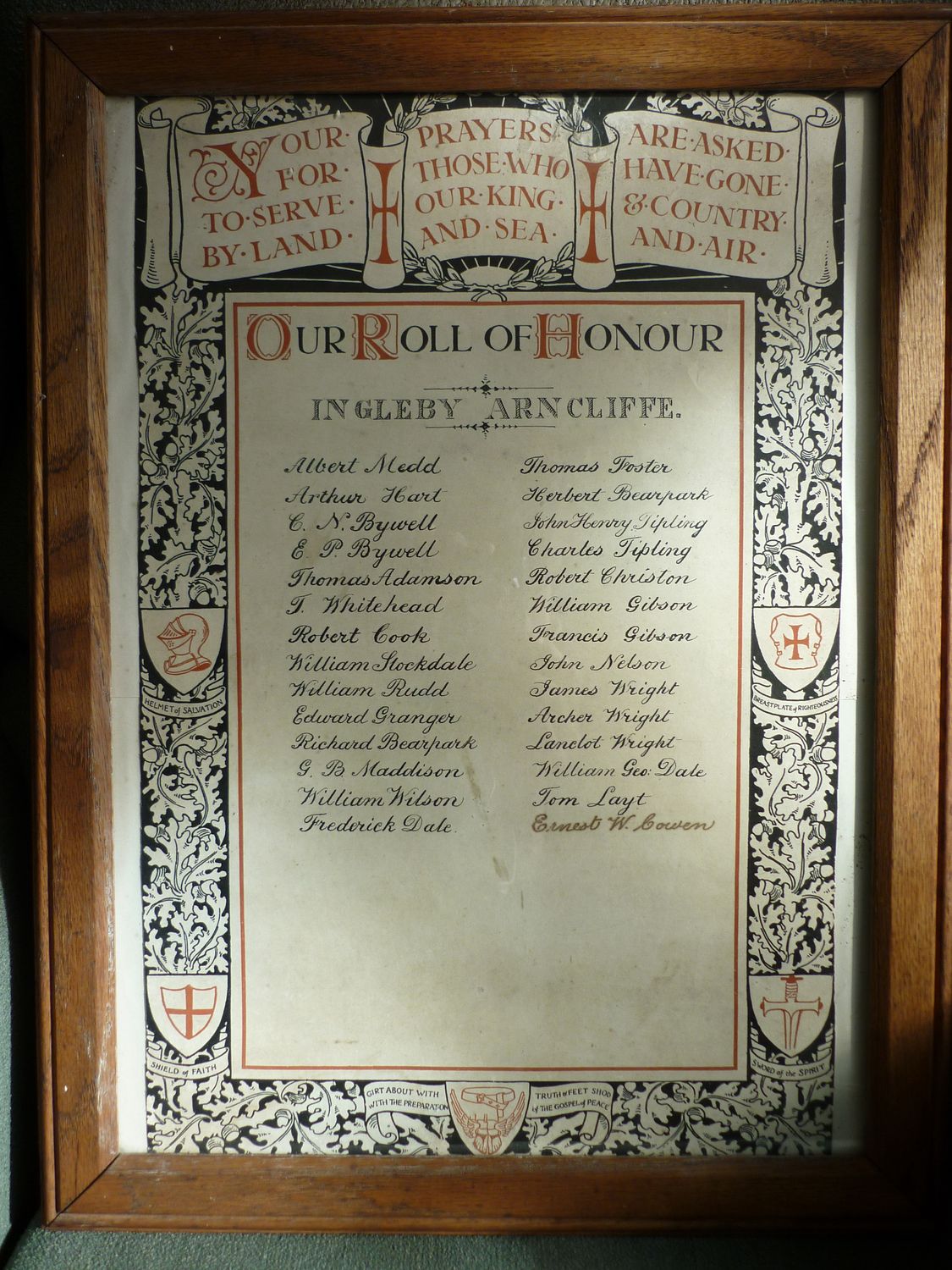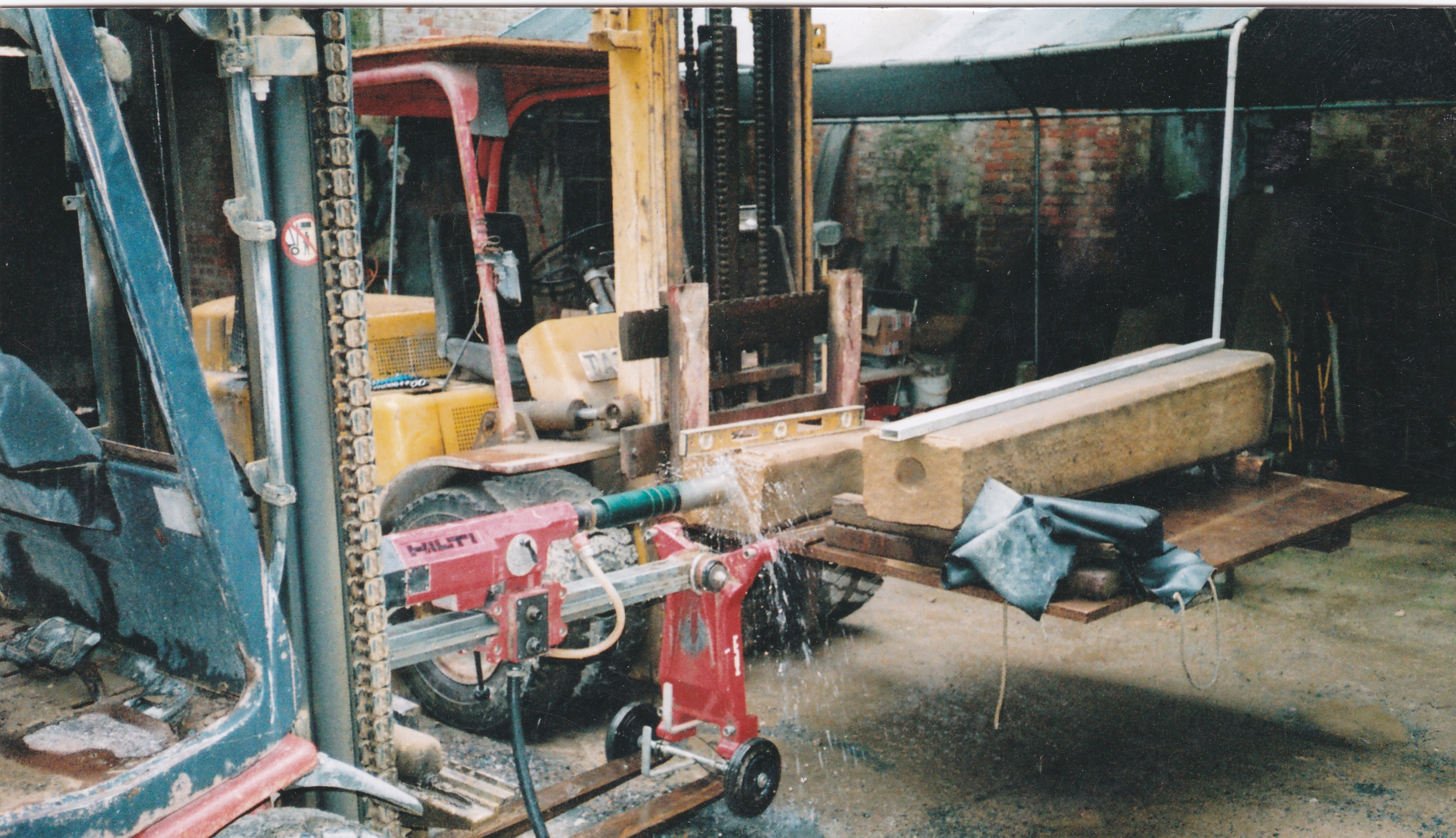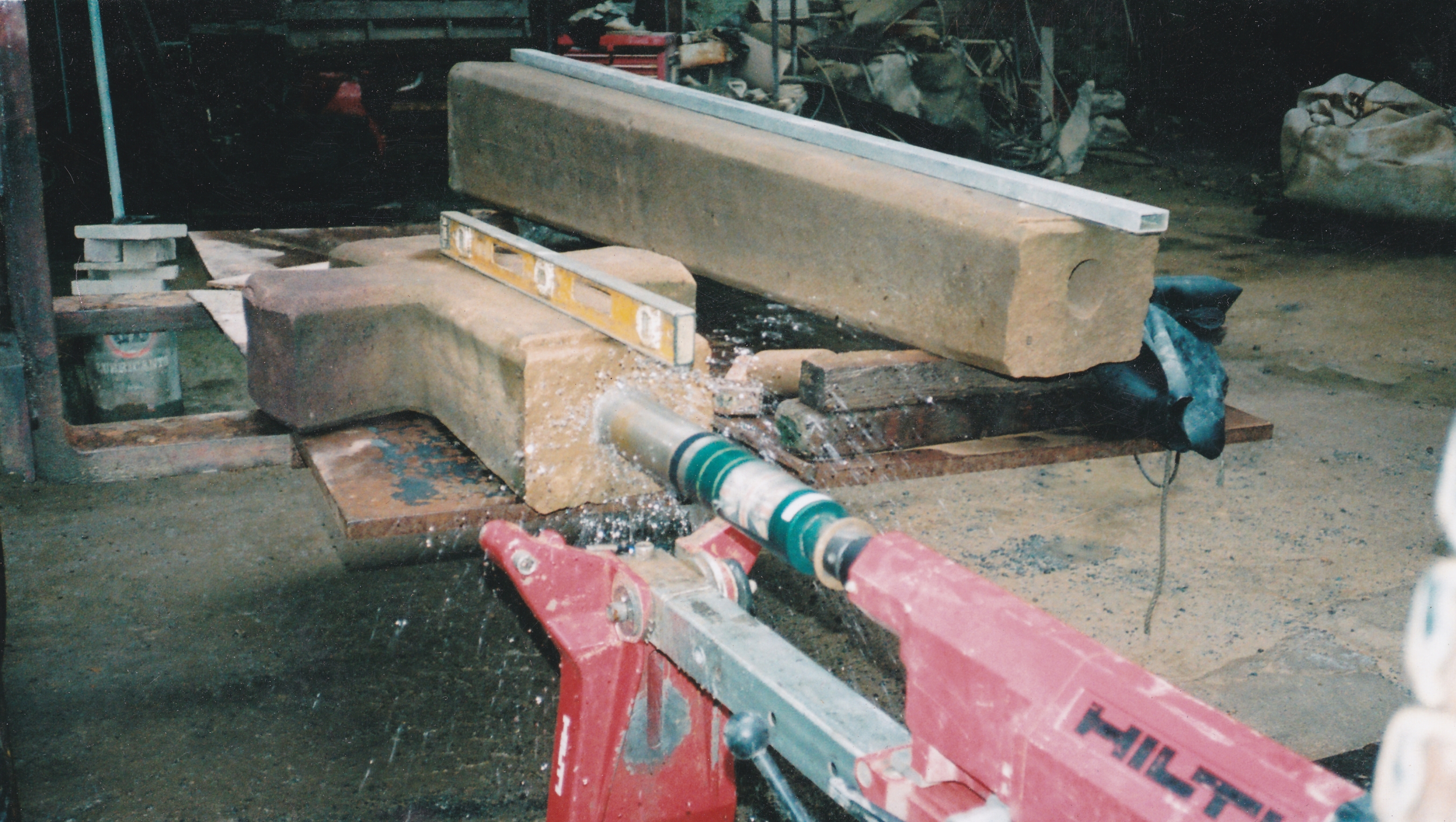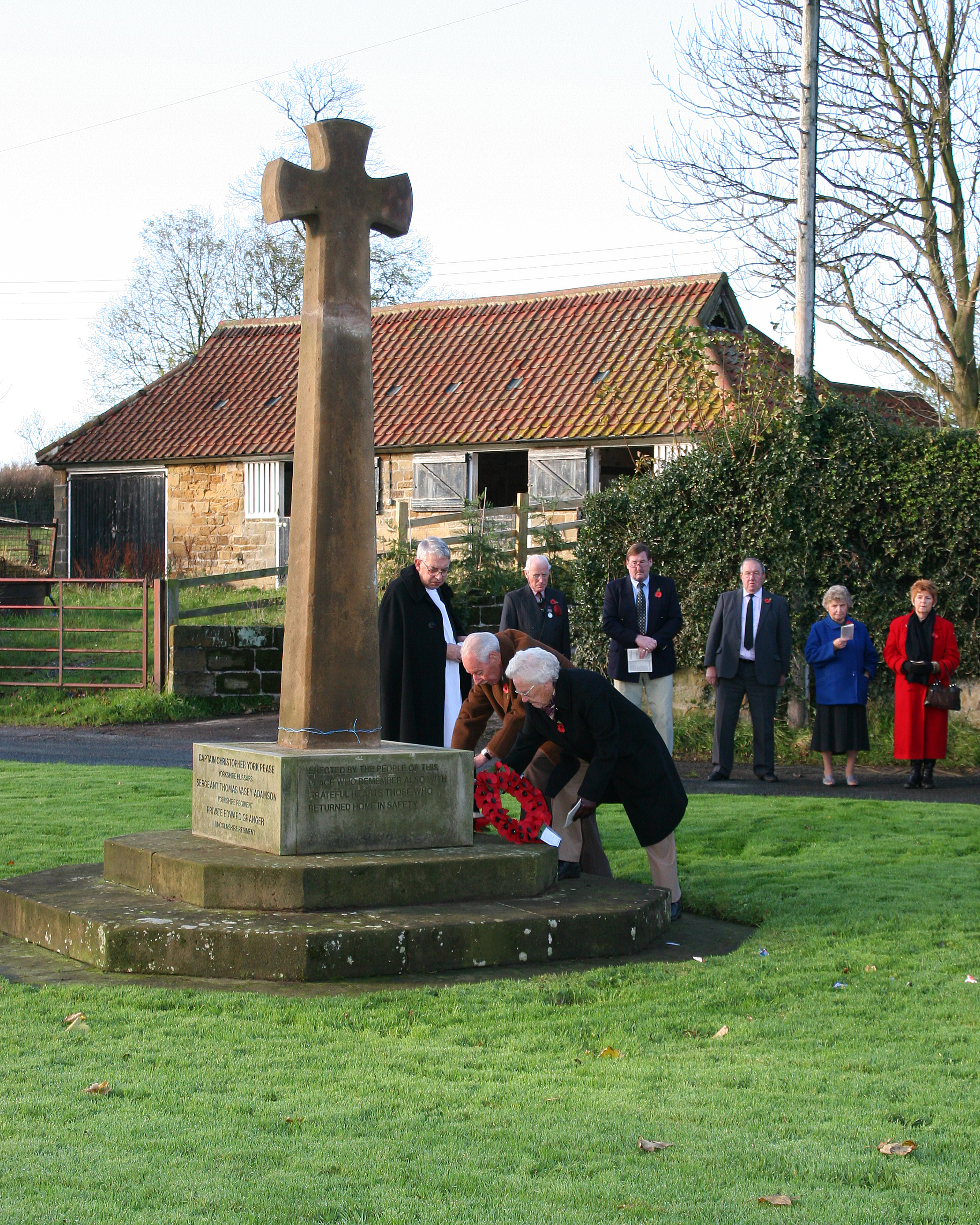The Ingleby Cross war memorial is located on the green between the village hall and the Blue Bell inn. It has a two-stepped base surmounted by a plain moline (Christian) cross carved from sandstone.
Inscribed names
Captain Christopher Pease, Yorkshire Hussars Yeomanry – killed in action aged 31 on 9th May 1918 during heavy German shelling of the British trenches 3 miles south of Givenchy-lès-la-Bassée. He is buried in Mazingarbe Communal Cemetery Extension.
Sergeant Thomas Vasey Adamson, 4th Battalion, Yorkshire Regiment – killed in action or died of wounds aged 23 on 26th March 1918 near Rosières-en-Santerre, about 18 miles south-east of Amiens, during the German Spring Offensive on the Western Front. He is buried in Moreuil Communal Cemetery Allied Extension.
Private Edward Granger, Lincolnshire Regiment – died of wounds aged 35 on 2nd June 1917 in Dover Military Hospital, having been severely wounded 19 days earlier just before the end of the Battle of Arras. He is buried in the churchyard of St. Mary the Virgin, Leake, near Thirsk.
Private Albert Medd, 15th Battalion, West Yorkshire Regiment – missing in action aged 33 on 3rd May 1917 just east of Gavrelle during the Third Battle of the Scarpe 5 miles north-east of Arras. His body has no known grave. His name is commemorated on the Arras Memorial to the Missing.
William Stockdale – served as a Private with 4th and 5th Battalions, Yorkshire Regiment, and was captured 3 miles south-east of Arras on 23rd April 1917 during the Second Battle of the Scarpe. He suffered ill health during the next 19 months spent as a prisoner of war. He returned to Ingleby Arncliffe but he was unable to recover. He died at home aged 29 on 19th March 1924. He is buried in the churchyard of All Saints Church, Ingleby Cross.
Map showing where the men commemorated on the Ingleby Cross war memorial last served
Biographies
Most of the research into their biographies was carried out between 2014 and 2017. Several issues came to light which may be of help to anybody researching war memorials or family histories:
- The age at death stated on contemporary documents was sometimes a year too old: the year of birth had been subtracted from the year of death.
- The surname stated on contemporary documents and on war memorials was sometimes spelled slightly differently. (Source: K Burton)
- Regimental and brigade war diaries may have been written several days after a battle, based on information that had been pieced together. In a retreat, a soldier could have been killed anywhere on that day’s route, and buried nearby; and on plus or minus a day to the date quoted in the war diary. (Source: G Riordan)
- The bodies of service personnel killed or died of illness abroad during WW1 were not normally repatriated to the UK for burial. A soldier from Stokesley was sent home in ill health for treatment for T.B., and subsequently died at home. (Source: K Burton)
- From the Commonwealth War Graves Commission website: “The Commission commemorates those who died during the First and Second World Wars in service or of causes attributable to service”. Categories include: killed or missing in action; illness; accidents; and whilst serving overseas or in the UK. (Source: K Burton)
- Names may appear a war memorial in a different area to where the person had lived and on more than one war memorial, depending on where relatives were living after the war and their wishes to commemorate the fallen. (Source: K Burton)
- Some widows remarried soon after the death of their husband, often because they needed the means to support their family. (Source: K Burton)
North face of the war memorial
On the north face are the following words:
ERECTED BY THE PEOPLE OF THIS
PLACE WHO REMEMBER ALSO WITH
GRATEFUL HEARTS THOSE WHO
RETURNED HOME IN SAFETY
South face of the war memorial
On the south face are the following words:
IN MEMORY OF THE GREAT WAR OF
1914-1918 AND OF THE MEN OF THIS
VILLAGE WHO FELL IN DEFENCE OF THEIR COUNTRY
TELL ENGLAND YE WHO MARK THIS MONUMENT
FAITHFUL TO THE END WE REST CONTENT
New inscriptions
By the late 1990s the inscriptions around the base of the war memorial had become badly weathered.
The words on the south face were particularly hard to read. One of the village residents, the late Marjorie Stewart, had seen a similar inscription on a war memorial during a visit to Gallipoli where a relative had been killed, and had written it down. She took a stone rubbing of the Ingleby Cross memorial and compared the words. Members of the Parish Council agreed with her findings. She then checked with the Royal British Legion, and it was agreed that the new stone would be inscribed with, “Tell England ye who mark this monument, faithful to the end we rest content.”
Several similar versions can be found on war memorials in England and in France but an exact match has not yet been identified.
In 2001 the new panels were attached with studs which were a push fit into holes drilled in the old faces. The bottom halves of the new panels were skimmed with mortar prior to being fitted. The work was carried out to a very high standard by monumental masons D G Collinson & Son (the firm is now Dales of Thirsk).
More Information About the Ingleby Cross War Memorial South Face Inscription
War memorial blown over
On the night of 7th/8th January 2005 100mph winds and driving rain hit the region. Several properties in Ingleby Cross were damaged and the war memorial toppled over. The shaft broke into 2 main pieces. Ian Stevenson, Brian Wilde and David Leng lifted the pieces onto a pallet for loading onto a trailer, which David towed up the A19 to Robert Pilling Stonecraft Limited at East Rounton. Rob drilled holes for 4 inch stainless steel bolts to connect the broken pieces and made the joints with adhesive mixed with stone drillings to make them less visible. Photographs by Rob of the repairs can be found below. Rob drilled a hole in the plinth to take the new bolt in the base of the shaft. On 21st October 2005 Brian assisted Rob and David with the difficult task of raising the repaired cross and setting it in position. The memorial was re-dedicated by the late Reverend Alan Dodd during the Remembrance Sunday service on 13th November 2005. Members of the community were very grateful for Rob’s help and expertise which he supplied free of charge in memory of the men commemorated.
Roll of Honour

A total of 28 men from the Parish served in the Armed Forces during the First World War and their names are on the Roll of Honour which was displayed in All Saints Church during the war. The names are not in alphabetical order.
Transcription of Roll of Honour all Saints Church
The heading states “Your prayers are asked for those who have gone to serve our King & country by land and sea and air”, which suggests that names were added as men joined one of the Armed Services. A Google search produces at least one example of an identical Roll of Honour to this one (Daresbury, Cheshire) and examples of other designs of Rolls of Honour (e.g. The Roll of Honour for the Parish of Welney, Norfolk: “Men of this parish now serving in the Army and Navy in the Great War”); in both of these examples, the names are not in alphabetical order.
It appears that blank Rolls of Honour were printed en masse, for purchase by or for issue to Parishes.
Looking at the handwriting, the first 7 names were entered in the left hand column. The 8th name entered was either in the left hand column or at the top of the right hand column.
The same person may have entered the names in both columns, except for the last name in the right hand column.
The Christian name of Lanclot Wright was possibly mis-spelt and should have been recorded as Lancelot (an internet search has not found a match for the name “Lanclot”).
Not included on the Roll was Captain Pease, who was living in Darlington before he obtained his commission in the Army.
The 24 men on the Roll who are not listed on the war memorial survived the war. For example, a current resident can remember seeing Herbert Bearpark and Arthur Hart in the village.
Request for information
If you have any new information or comments about the war memorial or the soldiers commemorated on it, please contact Tim Roy by Email: Warmemorial@gmail.com
Tim Roy, October 2018.
.jpg)


.jpeg)
